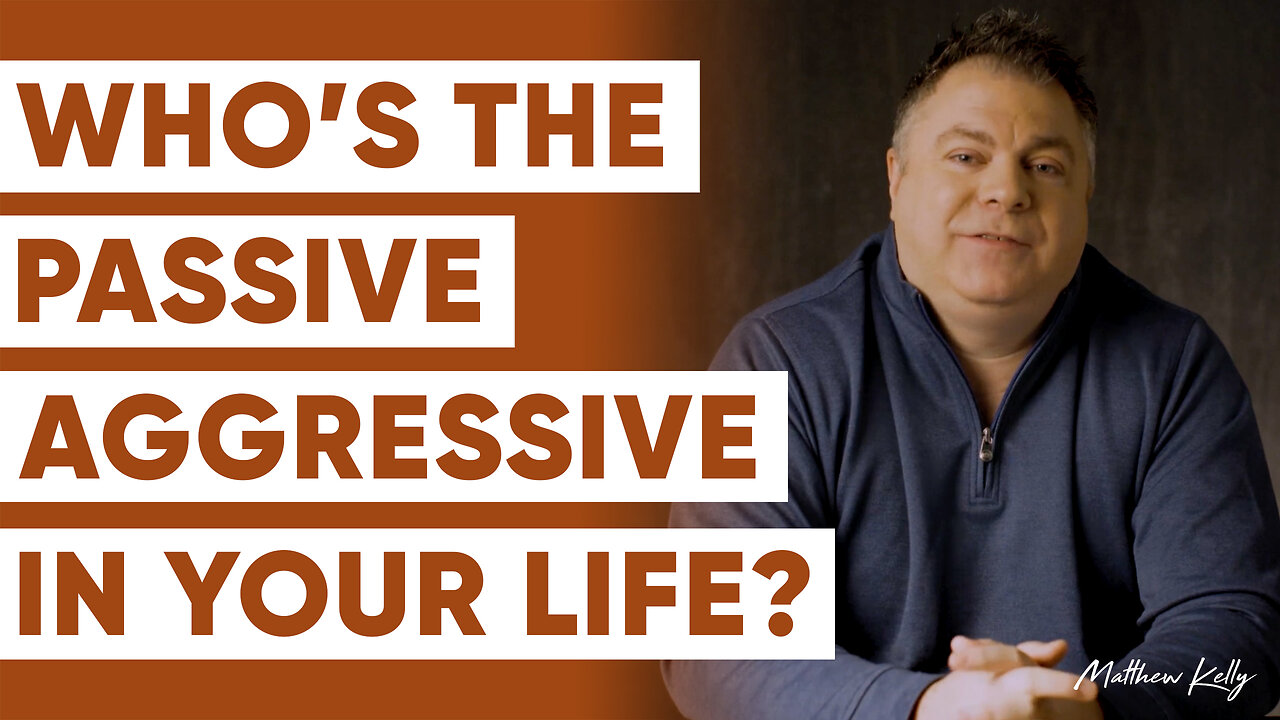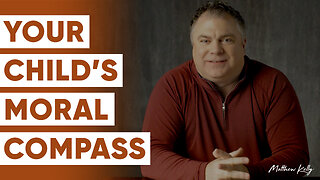Premium Only Content

How to Recognize Passive-Aggressive Behavior (And What to do About It!) - Matthew Kelly
Who’s the Passive-Aggressive in Your Life?
How to Recognize Passive-Aggressive Behavior (And What to do About It!) - Matthew Kelly
Get Matthew’s 60 Second Wisdom delivered to your inbox: https://www.matthewkelly.com/subscribe
Video Transcript:
“Most of us encounter passive-aggressive behavior on a daily basis. It could be as simple and innocent as a child who is unable to express her feelings or an adult who is intentionally trying to manipulate and control us.
What is passive-aggressive behavior? It’s a pattern of indirectly expressing negative feelings instead of openly addressing them.
The first important word to connect with out of this definition is ”pattern”. It isn’t something that happens once. When something happens once, it’s an event. If something happens twice, depending on how serious something is, we may be willing to give people the benefit of the doubt. But once something happens three times, it’s a pattern.
An example of passive-aggressive behavior is someone who agrees to something you ask them to do, perhaps even agrees enthusiastically, but then expresses anger and resentment by failing to complete the task or missing deadlines.
Passive-aggressive behavior often involves using inaction to punish or control people. It also usually involves refusing to express thoughts, feelings, opinions, and desires in a mature way.
Passive-aggressive people attempt to get what they need or want indirectly and manipulatively. They act out aggressive impulses in an indirect way. For example, they might say, “Don’t bother. I guess I’ll just have to do it myself” as a way to guilt and manipulate you into doing what they want you to do right now. Instead of simply asking you to do something and explaining why it matters to them.
Other examples of passive-aggressive behavior include: Resentment and opposition to reasonable requests; sulking; backhanded compliments; withdrawal; procrastination; intentional mistakes; refusing to communicate; cynical, sullen, or hostile attitudes; and frequent complaining.
When someone is behaving in one or more of these ways, it’s important to control your anger and explain what you are witnessing and experiencing in a non-judgmental, factual way.
For example, you might say to your child, "You seem to be angry at me for asking you to clean your room." Or you might say to your partner, “You agreed to come with me today, but now you seem resentful and angry at having to come.”
Remember, passive-aggressive behavior is a pattern of indirectly expressing negative feelings, instead of addressing them openly. When a person is engaging in passive-aggressive behavior, there is always a disconnect between what that person says and what he or she does.
Passive-aggressive behavior interferes with millions of personal and professional relationships every day. It sucks the joy out of doing things together, makes difficult things even more difficult, it is exhausting, and can lead us to doubt ourselves and question whether something is wrong with us. Once someone gets us into this fragile psychological state, we are easier than ever to manipulate.
What’s the solution? Learn to recognize passive-aggressive behavior in your life, and don’t delay in pointing it out when you see it being used.”
If you have not read LIFE IS MESSY, order your copy today: https://amzn.to/2TTgZKn
Subscribe to Matthew’s YouTube Channel today! https://www.youtube.com/c/MatthewKellyAuthor/featured?sub_confirmation=1
Get Matthew’s 60 Second Wisdom delivered to your inbox: https://www.matthewkelly.com/subscribe
The Best Version of Yourself and 60 Second Wisdom are registered trademarks.
#MatthewKelly #BestVersionOfYourself #BestVersion #ThoughLeader
-
 5:48
5:48
Matthew Kelly
2 years agoYour Child’s Moral Compass: You Don’t Have As Much Time As You Think - Matthew Kelly
35 -
 2:04:11
2:04:11
Melonie Mac
5 hours agoGo Boom Live Ep 32! Soul Reaver Remastered!
25.4K6 -
 39:11
39:11
Sarah Westall
3 hours agoDigital Slavery and Playing with Fire: Money, Banking, and the Federal Reserve w/ Tom DiLorenzo
36.8K1 -
 1:38:38
1:38:38
2 MIKES LIVE
8 hours ago2 MIKES LIVE #157 ILLEGALS, PROTESTORS AND DRONES!
24K1 -
 1:01:03
1:01:03
LFA TV
1 day agoTHE LATEST SPENDING BILL IS AN ABOMINATION! | UNGOVERNED 12.18.24 5pm EST
28.7K33 -
 1:43:34
1:43:34
Redacted News
7 hours agoBREAKING! WARMONGERS PUSHING TRUMP TO LAUNCH PRE-EMPTIVE WAR WITH IRAN | Redacted News
134K235 -
 1:00:26
1:00:26
Candace Show Podcast
6 hours agoPiers Morgan x Candace Owens | Candace Ep 123
77.9K205 -
 2:06:51
2:06:51
Darkhorse Podcast
9 hours agoFollow the White Rabbit(s): The 256th Evolutionary Lens with Bret Weinstein and Heather Heying
59.3K26 -
 3:08:08
3:08:08
Scammer Payback
7 hours agoCalling Scammer Live
35.5K3 -
 1:21:25
1:21:25
Mally_Mouse
10 hours agoLet's Yap About It - LIVE!
83.6K9